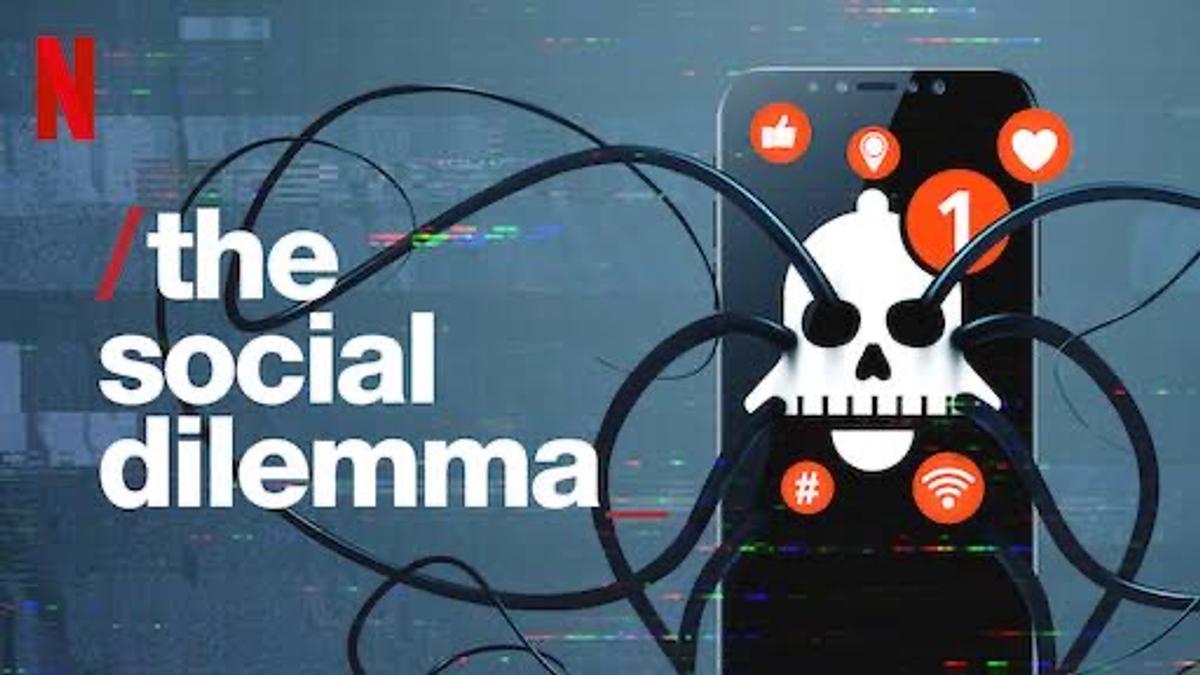Assistant Principal - Pastoral Care

The Social (Media) Dilemma
A recent Netflix documentary titled ‘The Social Dilemma’ has provoked intense debate and concern about social media and technology. The documentary includes interviews with key individuals who helped engineer many of the apps that are so prevalent in people’s lives today: Facebook, Google, Twitter, Instagram, Youtube. The table below indicates how widespread these apps are in the lives of our young.
| Social Media | % 13-17 year olds | % 18-24 year olds |
Snapchat | 69 | 78 |
72 | 71 | |
51 | 80 | |
32 | 45 | |
Youtube | 85 | 94 |
Most significantly, the documentary shows how our brains are being manipulated and even rewired by algorithms that are designed to get our attention and make us buy things, including buying into distorted ideas about the world, ourselves, and each other. One of the most disturbing comments comes from Jaron Lainer, founder of Virtual Reality Computer Scientist:
“It's the gradual, slight, imperceptible change in your own behaviour and perception that is the product.”
As consumers of these products our behaviour is changed. As he argues, it is “imperceptible” meaning that it is not obvious, nor dramatic – if that were the case we would be much warier of what is taking place. Where these products are so insidious is in the slow ‘drip’ effect that occurs within our psyche and therefore our behaviour.
“We’ve created a world in which online connection has become primary. Especially for younger generations. And yet, in that world, anytime two people connect, the only way it’s financed is through a sneaky third person who’s paying to manipulate those two people. So we’ve created an entire global generation of people who were raised within a context with the very meaning of communication, the very meaning of culture, is manipulation.” - Jaron Lainer
“We’re training and conditioning a whole new generation of people that when we are uncomfortable or lonely or uncertain or afraid, we have a digital pacifier for ourselves. That is kind of atrophying our own ability to deal with that.” - Tristan Harris, former design ethicist at Google and co-founder of Centre for Humane Technologies.
As a consequence, the impact on young people’s sense of identity and self-worth, and their ability to connect with others is profound. The social psychologist and NYU professor Jonathan Haidt (who I have quoted in previous newsletters) observes a “gigantic increase” in depression and anxiety among American pre-teen and teenage girls since 2011, coinciding with the rise of social media. According to the Centers for Disease Control and Prevention, there was a 62 per cent rise in girls aged 15 to 19 being admitted to hospital for self-harm, and 189 per cent in 10 to 14-year-olds (American stats but similar in Australia). Yet the platforms continue to feed their tech addiction and keep them plugged in.
Justin Rosenstein, the inventor of Facebook's feature, the "like" button, explains how this function has had unintended consequences. Initially it was intended to "spread positivity." The problem has become that people get their feelings hurt if they don't get likes. As a result, they amend their behaviour to attract more likes. This may not be so much of a problem for secure, well-rounded adults but for young people forming their adult identity this can me a minefield.
As part of the growing up process, teenagers no longer rely solely on affirmation from their parents about their identity but instead seek it from their peers. And unfortunately they don’t stop there, the whole unregulated world of the internet is there to source to ask what people think about your clothes and hair and skin and makeup and physique and skills etc. This is why (some argue) there is a surge in anxiety, depression, self-harm, and suicide attempts by the girls of Gen Z, as much as triple in some categories. Likewise, there's the new clinical condition "Snapchat Dysmorphia," describing the people who seek plastic surgery to look more like the filtered images they see online.
“If something is a tool, it genuinely is just sitting there, waiting patiently. If something is not a tool it's demanding things from you. It's seducing you, it’s manipulating you, it wants things from you. We've moved away from a tools based technology environment, to an addiction and manipulation used technology environment. Social media isn't a tool waiting to be used. It has its own goals, and it has its own means of pursuing them by using your psychology against you.” - Tristan Harris, former design ethicist at Google and co-founder of Centre for Humane Technologies.
Many of the conclusions made in the documentary are supported by an article titled, ‘Social Media and Adolescents’ and Young Adults’ Mental Health’ from the National Centre for Health Research in the USA:
While social media is yet to be proven to be a direct cause of anxiety and depression, “there is research that suggests that social media use might, at least to some degree, lead to these symptoms. For example, in one study from 2020, people who deactivated their Facebook account for a month reported lower depression and anxiety, as well as increases in happiness and life satisfaction.”
Social media does have an impact on adolescents sleep patterns: “Researchers believe that one problem is that social media use can disrupt sleep, and poor sleep can lead to anxiety and depression. Social media use at night disrupts sleep in a number of ways: People stay up late online, the light from the screen can disrupt one’s circadian rhythm, and many people wake up in the night in order to check or respond to messages.” Teenagers fear not maintaining social connection and adhering to the social norms of responding immediately.
“In fact, teens and young adults often worry about what they call FoMO, which stands for “fear of missing out,” which is anxiety about missing out on experiences. Social media can worsen feelings of FoMO, for example, if someone sees posts about a party that they were not invited to. Adolescents may be particularly vulnerable to potential negative impacts of social media because social connectedness is important for their development. Browsing social media can lead to FoMO, and the feeling of being excluded can lead to negative feelings.”
Added to this are issues surrounding body image, for girls and boys, is harmed by social media use. Higher social media use leads to “body surveillance,” which refers to monitoring one’s own body and becoming judgmental of it. People who do more body surveillance report feeling more shame about their bodies. Looking at profiles of attractive people leads to more negative body image.
Below is a list of tips to help with healthy social media use. As parents are the primary role model for their teenagers, this should apply both for your use as much as your son or daughter’s use of social media. This is particularly relevant if you have noticed those “imperceptible” changes within your teenager.
Tips for managing social media use:
- Pick a time at night after which you will not check your phone, and if possible, recharge your phone in another room while you sleep.
- Use an alarm clock instead of relying on your phone as an alarm to prevent you from using your phone the minute you wake up.
- Choose one day a week where you take a day off from social media and focus on other things.
- Turn off your notifications for at least a few hours each day (which you can gradually increase); put your phone in “Airplane” mode or “Do Not Disturb”.
- Set boundaries or only certain times when you can check your notifications.
- Take a break from apps that you notice contribute to unhealthy body image or feelings of inadequacy. Instead, you can try apps meant to help you feel better about yourself, such as meditation apps.
- Use apps that block certain other apps and tell you about your usage. This will help to increase your awareness of how much you are engaging with social media and help you focus on other activities.
- Start a habit of placing your phone near the door when you come home — doing it with a friend, partner, or family member can help you stay motivated and accountable! Make a plan with a group of friends to spend more time hanging out in person and less time interacting via social media.
- Consider putting your phone in greyscale. This makes your phone less enticing to look at. With the colourful apps and notifications changed to grey, they may be easier to ignore.
“There are only two industries that call their customers ‘users’: illegal drugs and software.” (The Social Dilemma)
Mr Mick Larkin - Assistant Principal - Pastoral

